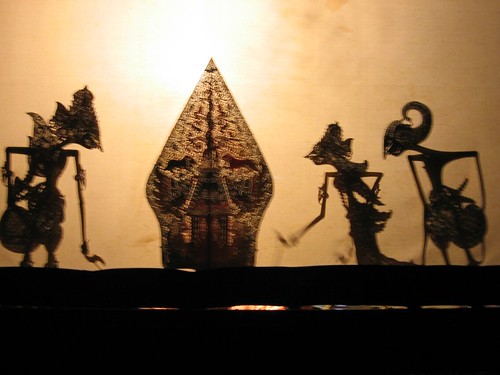 ‘Wayang’ is a Javanese word for shadow and ‘wayang’ has played a major role in the indigenous story telling traditions of the Indonesian archipelago for centuries. The first recorded mention of this word is in a 10th century inscription. Although there are various forms of ‘wayang’ the most popular form involves holding flat cutouts on rods between a source of light and a translucent screen and making magic with the puppets by moving them and the light in intricate ways. Wayang Kulit involves flat shadow puppets made from cow hide and it originated in Java and Bali. It is the most famous form of storytelling in the Indonesian puppet theater. Wayang Wong on the other hand is a type of Javanese drama performed by people while Wayang Gedog features performers in masks, Wayang Golek uses robust wooden puppets on rods that are operated by puppet masters from below the screen.
‘Wayang’ is a Javanese word for shadow and ‘wayang’ has played a major role in the indigenous story telling traditions of the Indonesian archipelago for centuries. The first recorded mention of this word is in a 10th century inscription. Although there are various forms of ‘wayang’ the most popular form involves holding flat cutouts on rods between a source of light and a translucent screen and making magic with the puppets by moving them and the light in intricate ways. Wayang Kulit involves flat shadow puppets made from cow hide and it originated in Java and Bali. It is the most famous form of storytelling in the Indonesian puppet theater. Wayang Wong on the other hand is a type of Javanese drama performed by people while Wayang Gedog features performers in masks, Wayang Golek uses robust wooden puppets on rods that are operated by puppet masters from below the screen.
Related posts
HOT TOPICS
Archives
Categories
- Activities (939)
- Adventures (166)
- Dining (96)
- Events & Festivals (98)
- Kids Pools (49)
- Playgrounds (47)
- Restaurants (60)
- Theme Parks (48)
- Destinations (2,164)
- Family Travel Tips (823)




